Disclosure: This content may contain affiliate links. Read my disclosure policy.
It’s so exciting to identify bear tracks in snow. A clean bear print is an impressive thing, always a thrill to see.
You’ve probably been told that bears hibernate in winter and, of course, they do — but not fully! Black bears semi-hibernate. They slow down. They den.
In New York, male bears generally den mid-December through mid-March. Female bears give birth in winter and they often bed down mid-November until mid-April. Further south, denning periods are shorter.
Black bears sometimes pop out to roam their neighborhood. In New York, it’s not unusual to identify black bear tracks in the snow all winter long. I don’t think I’ve made it through a winter in The Catskills without finding at least one monster bear print in the snow.
Animal prints are rarely as clear in nature as seen in diagrams. By the time you find a bear print, or a bobcat/coyote print, it will likely have been through at least one freeze/thaw cycle or some other weather degradation: rain, evaporation, more snow.
However, several times while hiking in winter, I’ve come across exceptionally fresh bear prints. See photos below.
Luckily, black bear prints are usually quite clear and easy to identify. Their size is often a helpful clue, but a small print cannot be discounted. A grown black bear is much bigger than a grizzly cub. Do not rely on the size of a pad to differentiate bear species.
Here’s how to identify bear tracks in snow…
Key Characteristics of Bear Tracks in Snow
There are no grizzlies in New York. We have only black bears. However, it’s useful to compare the two species’ tracks. Highlighting the differences between black bear and grizzly prints helps us learn both.
Identification Poster
If you’d like the following information in a single page printable poster showing all print identification features, I’ve added one to my ko-fi store.
BTW, you might also enjoy…
- NEW › New York Hike Finder Tool
- CATSKILLS › Escarpment Trail Guide
- STAY › Find Your Perfect Catskills Stay
- ADIRONDACKS › Dix Range from Elk Lake
- ENTERTAINMENT › 15 Best & Worst Hiking Movies
- Follow › My Instagram @TotalCatskills
- Follow › My Substack @TotalCatskills
- Follow › My writing for Times Union
How Big Are Bear Tracks in the Snow?
They can be any size, large or small. Both adults and cubs move around all winter long.
Identify Bear Tracks: Key Differences
There are four key differences between black and brown bear prints. Identify bear tracks in the snow by cross-referencing all four characteristics.
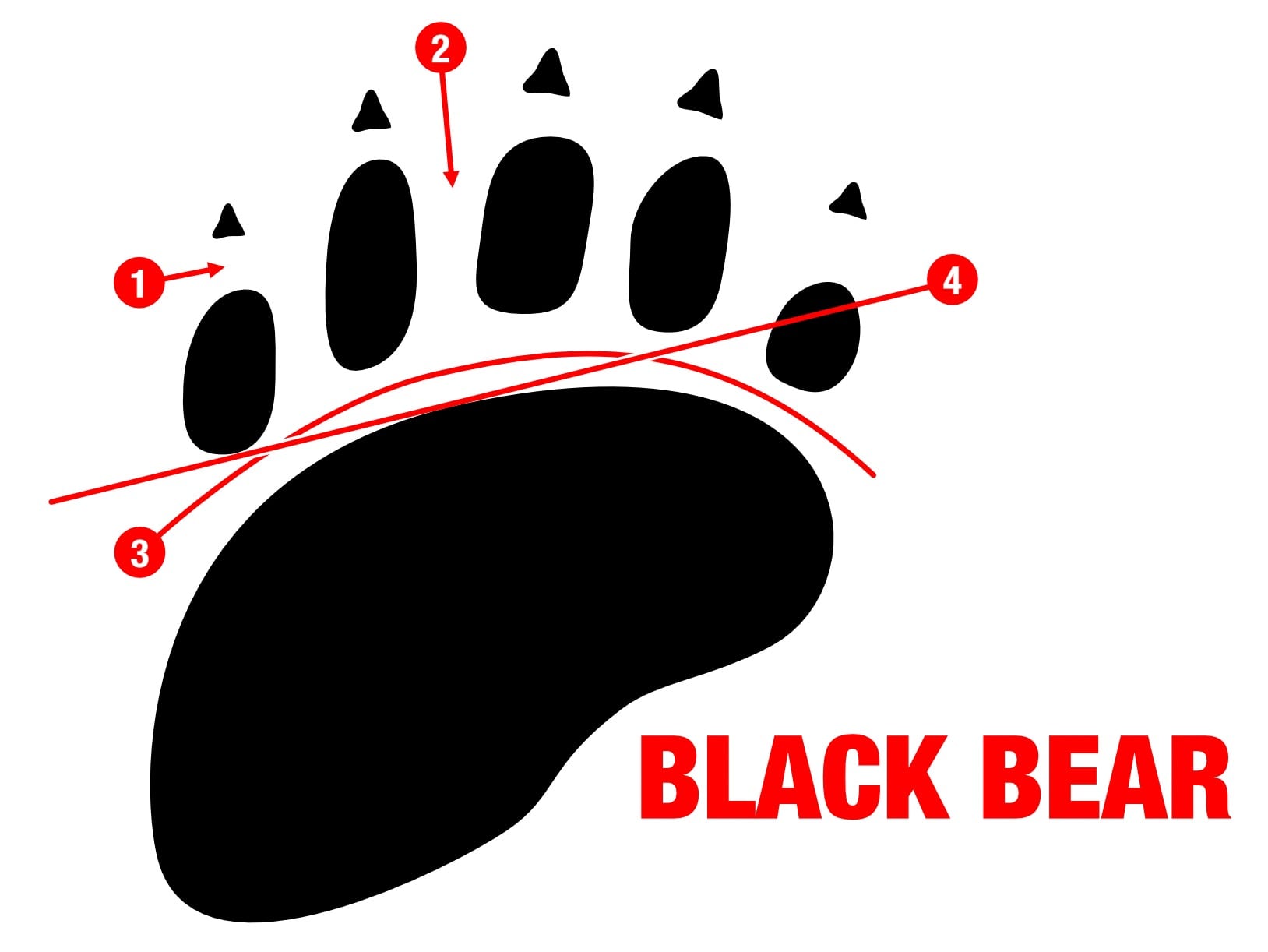
-
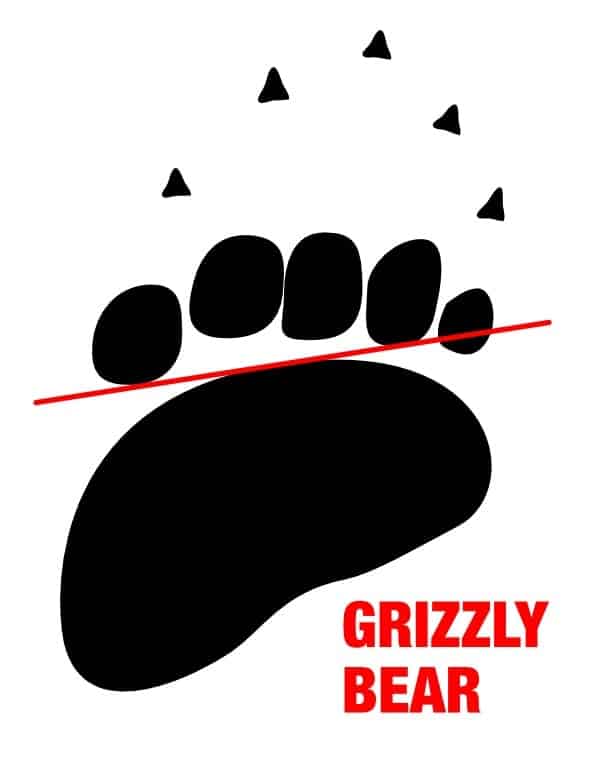
Black bear claw marks are spaced closer to the toes, compared with grizzly claw marks which are spaced farther from the toes.
- On black bears, the toes have good spacing between them. On grizzlies, the toes are more bunched together.
- On black bears, the space between the toe pads and the back pad is an arc. On grizzlies, it’s much less of an arc.
- On black bears, a line drawn from the bottom of the big toe pad along the top of the main pad cuts through the upper pad of the little toe. Whereas, on grizzlies, a line drawn from the bottom of the big toe pad along the top of the main pad cuts through the lower pad of the little toe.
Photo Gallery
Diagrams are great but here are some photographs to help you identify bear tracks in snow.
What do baby bear tracks look like in the snow? Like this! Here’s a set of cub tracks on the summit of Mount Sherrill in The Catskills…
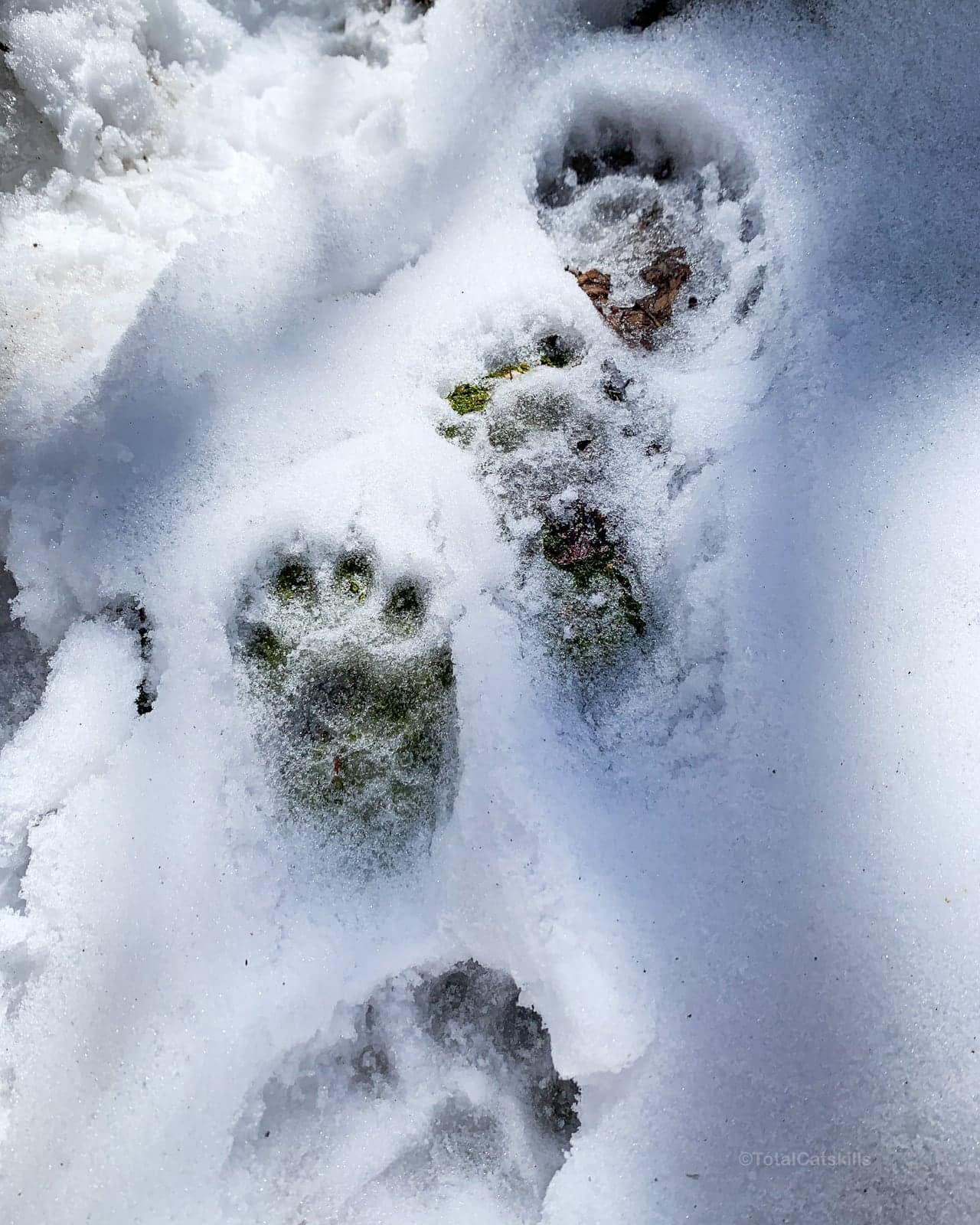
My hand for scale…

Adult bear tracks in snow (in this case, the momma’s print)…
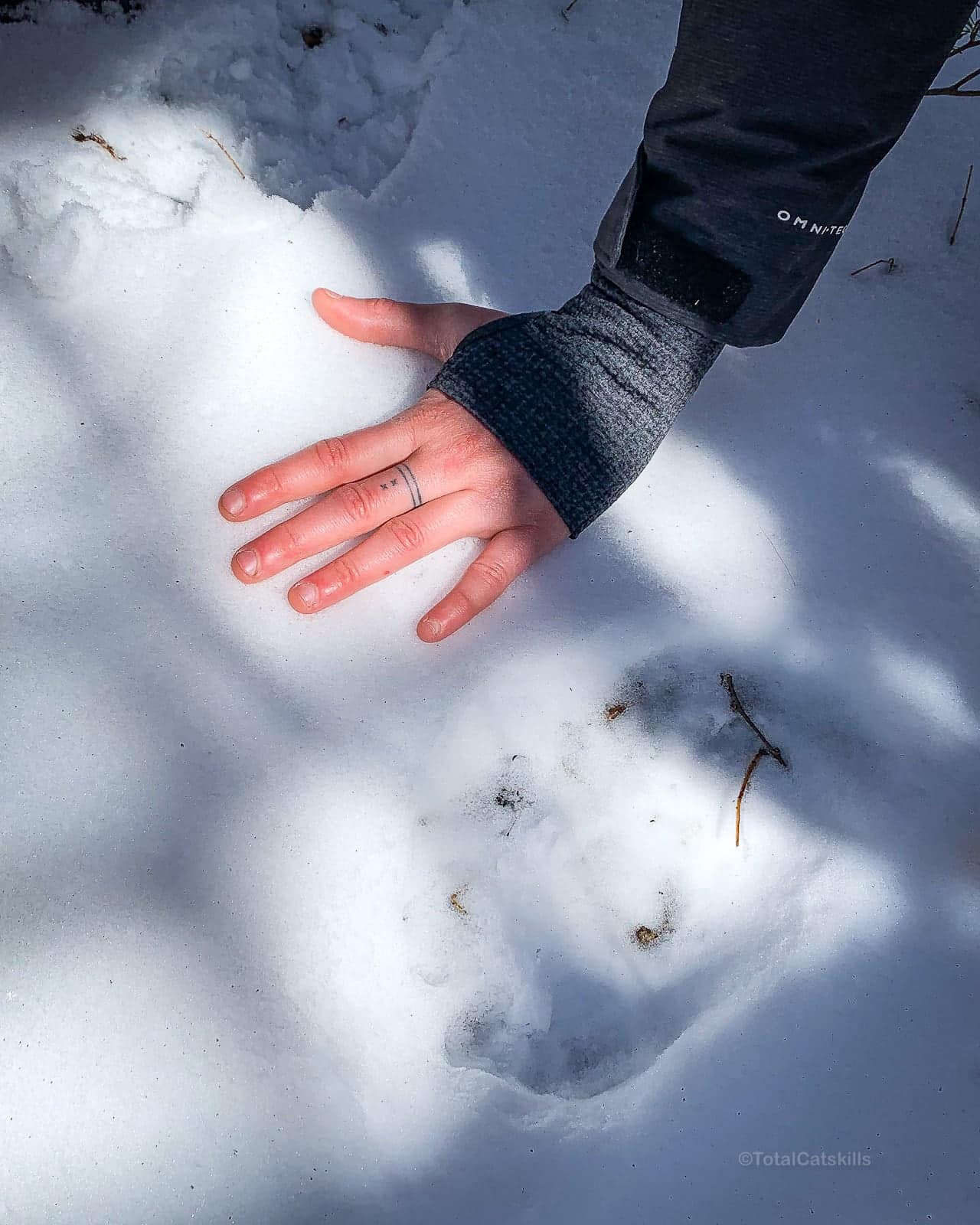
You’ll also enjoy reading Identify Bobcat vs Coyote Prints in Snow.
I found the following impressive adult print on my way back down a clean trail I’d hiked up an hour earlier. Fresh print with a dusting of new snow on top…

My foot for scale…
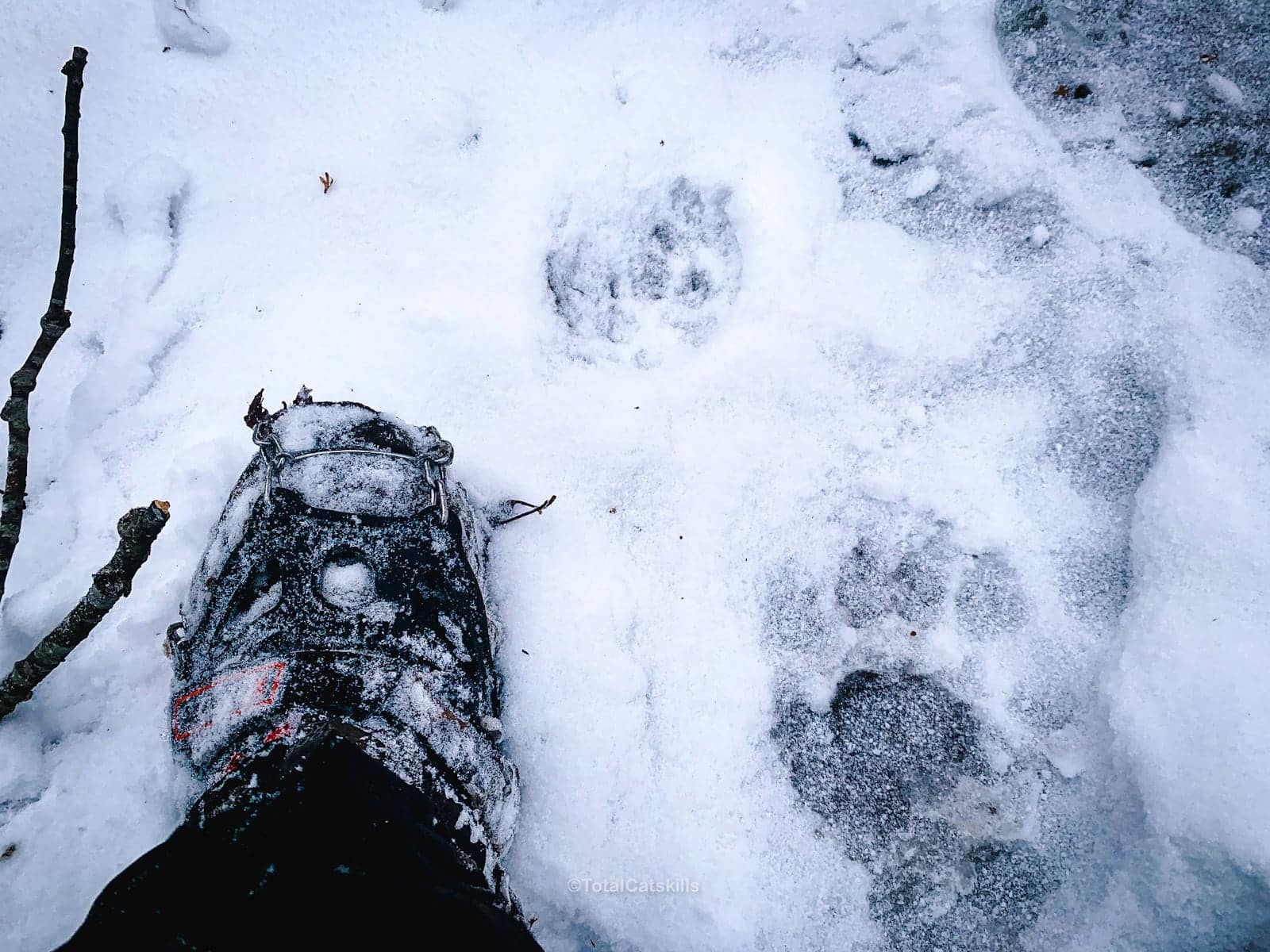
And I really loved finding this super-fresh bear print in February of 2022 on Sugarloaf Mountain in The Catskills, with the claw-marks dragged uphill through the snow…
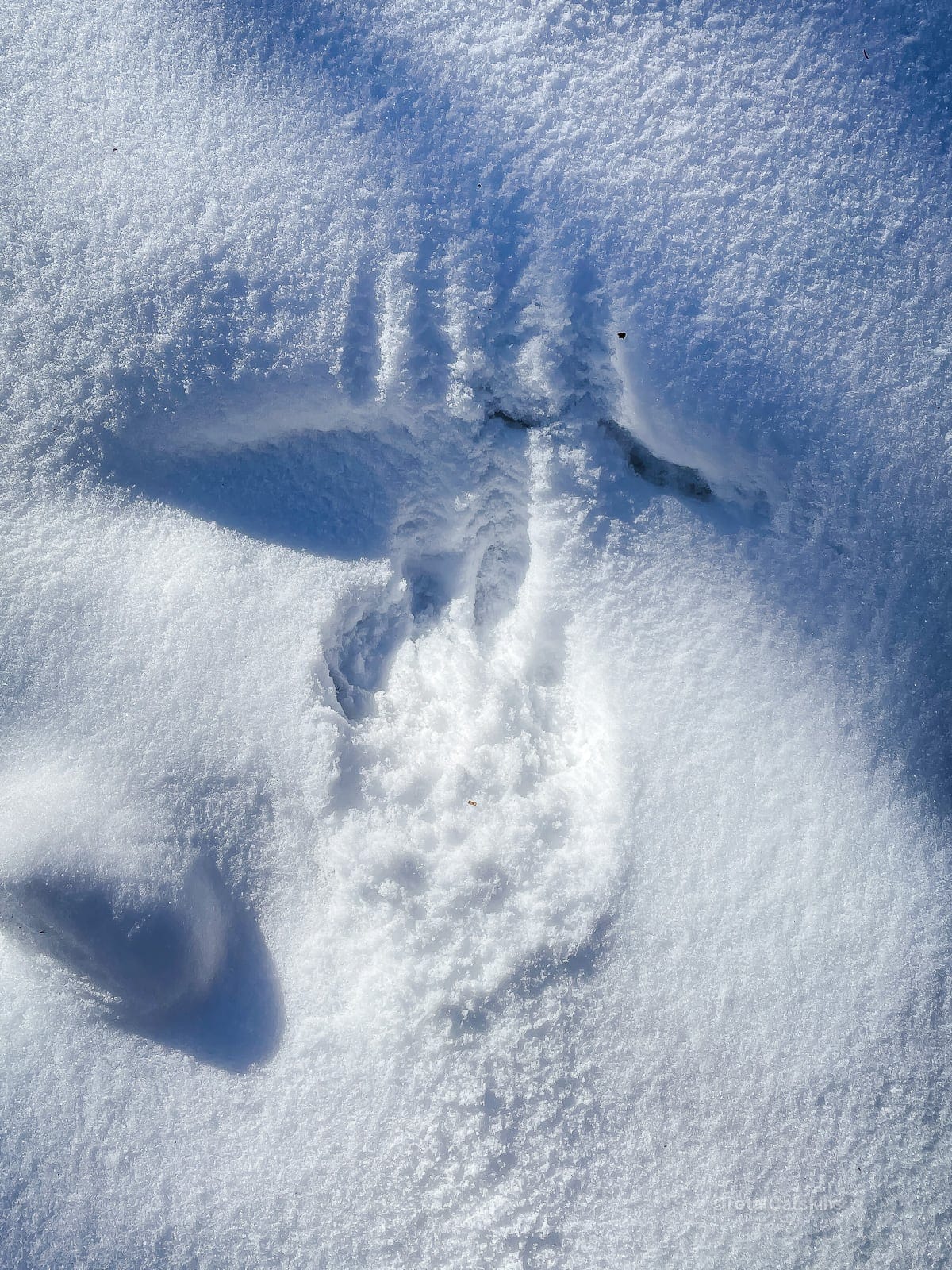
My foot for scale…
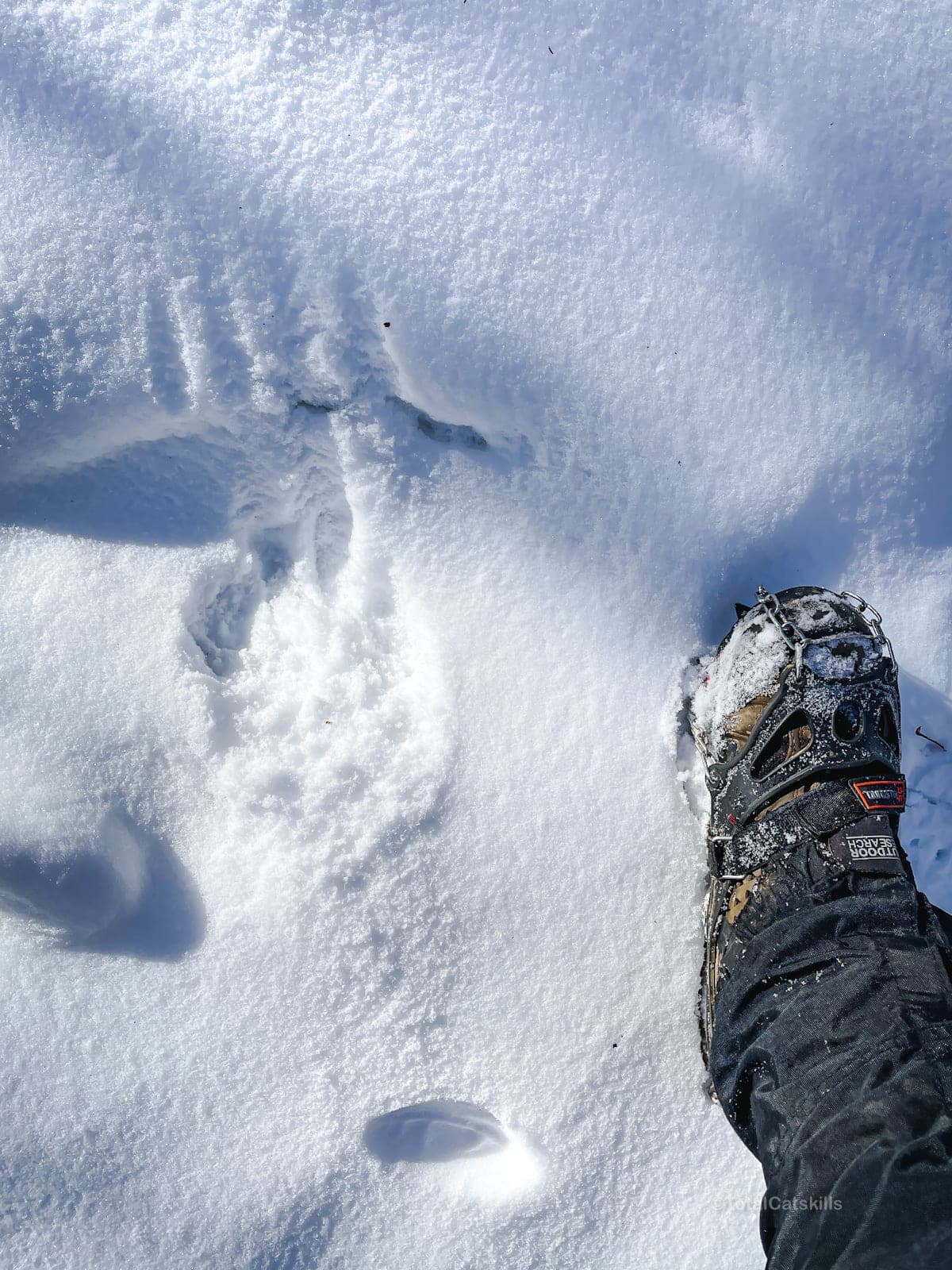
Black Bear Tracks in Snow…
Some friends and I passed this bear track in 2019 on the way up Doubletop Mountain in The Catskills.
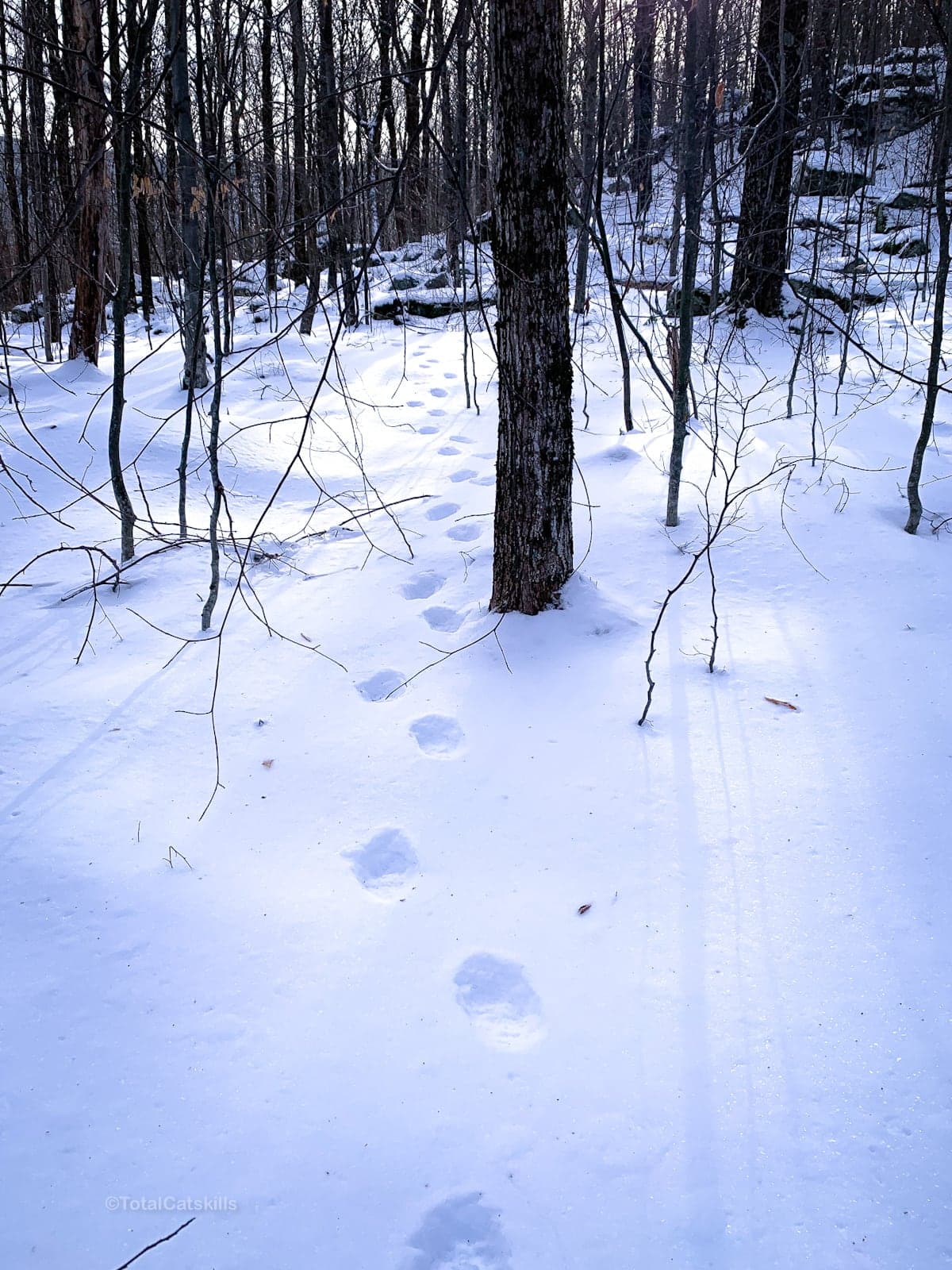
I hope this page helps you identify bear tracks in snow this winter. If you plan to head out on a winter hike, you’ll enjoy reading the How to Winter Hike: The Essential Roundup.
Download the Identification Poster
If you’d like the above information in a single page printable poster showing all above print identification features, I’ve added one to my ko-fi store.
Read More
- Read Identify Bobcat vs Coyote Prints in the Snow
- Read Animal Tracks in Snow: How to Recognize Common Critters’ Prints (Backpacker)
Get full access…
Get instant access to the full version of this site and enjoy great supporter benefits: full galleries, full trail notes, early access to the latest content, and more.
Hot on the website right now…
Follow for more…
Follow my @TotalCatskills content on Instagram for regular hiking inspo and safe, inclusive community.
